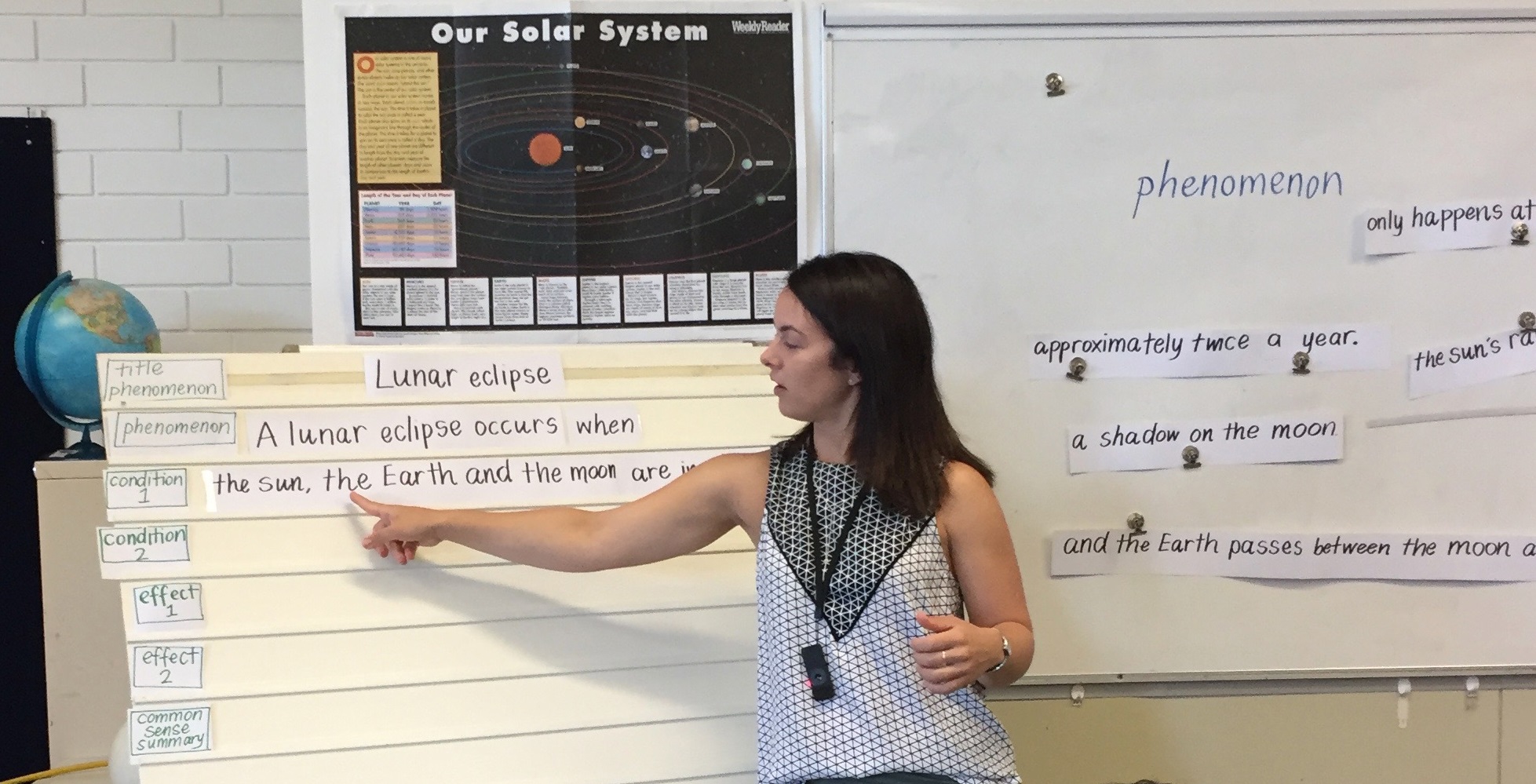4 Steps for a Successful Grammar Lesson
The following is taken from PETAA Book Teaching with Intent: Scaffolding Academic Language for Marginalised Students, written by Dr Bronwyn Parkin and Dr Helen Harper, published in 2018. This approach to a grammar lesson is given in the context of a teaching and learning sequence that has been introducing students to a new science topic and concepts.
For a useful grammar lesson, we suggest that the text needs to be presented in a way that it can be manipulated. A sentence maker is ideal (see the image at the bottom of this article), but an interactive whiteboard is also useful, if it affords the possibility of moving text around the board. Below the four steps for a successful grammar lesson you will find example scripts as ways for teachers to talk about grammar.
Step 1: Identify the paragraph structure
Draw attention to the structure of the paragraph first, using labels written on card. In the image below, note that the labels down the side of the sentence maker match the labels from the notes board. Initially the teacher begins with the labels displayed on the board without text, and the class selects the right bits of text displayed on the whiteboard and matches them with the labels on the sentence maker. Alternatively, she could have worked back to front: putting the paragraph on the sentence maker and having the class add the labels alongside. (The terms pictured, 'Conditions' and 'Effects' aren't grammatical terms, but simply generalisations decided on by the teachers that reflect the structure and purpose of each part of the paragraph.)
Step 2: Look for grammatical structures identified as learning goals
Look at each sentence in turn to see if there are any grammatical structures that you've already identified as learning goals. If there aren't, move to the next sentence. If there are, it is sometimes helpful to remove the other sentences temporarily from the board so that all students can attend to the importance sentence.
Step 3: Find the right words
The teacher has to find the right words to explain the grammatical structure and why it is there. To find those words, we continually asked ourselves, "So what? Why is this here?". It is sometimes useful to say to the class "We could have said...but we wrote it this way because...".
Step 4: Keep the grammar lessons brief and introductory
The aim is to draw student attention to the grammar so that it supports their writing, but at the same time we don't want to get side-tracked from the goal, which is for students to write. For this reason, we strongly suggest you follow up these lessons at another time with consolidation lessons, where the class focuses on practising one grammatical structure at a time and the learning goal is solely grammatical. Some useful references are Derewianka (2011), Derewianka & Jones (2016), White & Hamilton (2014) and Polias (2016).

Using a sentence maker in a grammar lesson